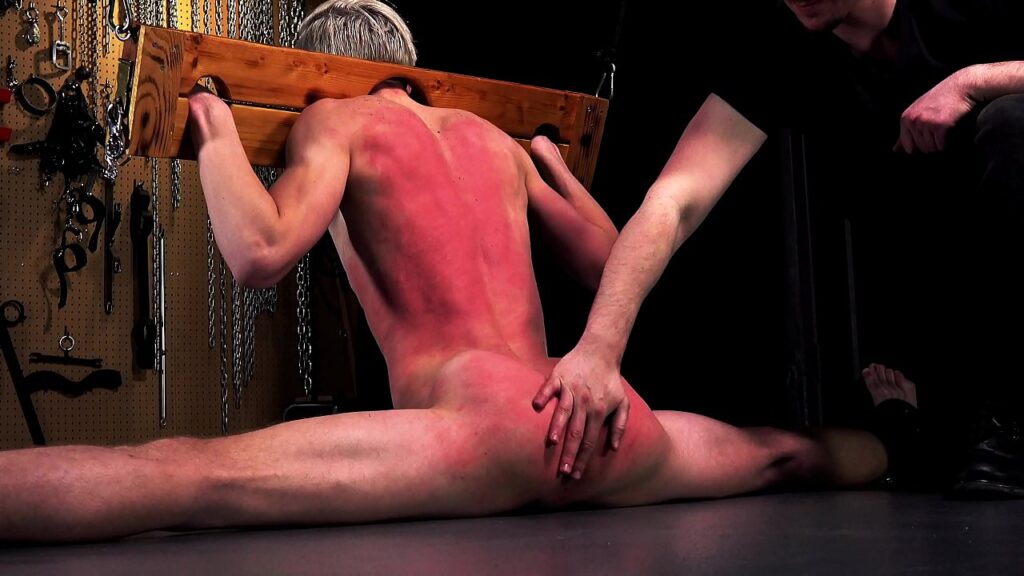Keywords: gay BDSM art, rope aesthetic, performance kink
BDSM has long been misunderstood as purely physical or purely erotic. But within queer culture—especially in modern gay art communities—BDSM has evolved into something deeper: a ritual, a performance, and a form of visual storytelling.
“Rituals of Submission” transforms power exchange into symbolism, movement, and aesthetics. Rather than focusing on pain or control, this artistic lens highlights connection, communication, and composition.

1. Submission as a Visual Language
In gay BDSM art, submission becomes a symbolic gesture.
A posture, a bowed head, the intentional stillness of the body—these elements form a silent vocabulary between partners.
What might seem like restraint becomes expression, a way to portray trust, devotion, or surrender in a visually striking way.
This is why many artists portray submissive figures not as powerless, but as central subjects filled with intention and beauty.
2. The Rope Aesthetic: Geometry, Form, and Balance
Rope work—often called shibari-inspired bondage—is one of the most iconic elements in gay BDSM art.
But it isn’t about restriction alone; it’s about lines, symmetry, contrast, and balance.
- Ropes create geometric patterns across the body.
- Knots become sculptural points of attention.
- Skin and fiber meet in a way that forms living artwork.
Photographers and performers use rope aesthetic to frame the body like architecture—turning torsos, limbs, and silhouettes into human canvases.
3. Performance Kink: Movement as Art
Beyond static visuals, BDSM often becomes performance art.
Each gesture—lifting an arm, tightening a rope, guiding a partner to kneel—becomes a choreographed act.
Performance kink includes elements such as:
- Slow ritualistic movement
- Guided breathing
- Symbolic gestures of offering or grounding
- Co-created rhythms between partners
When displayed on stage, video, or photography, performance kink becomes a medium where the body communicates emotion, devotion, and aesthetic tension.

4. Ritualized Submission in Queer Culture
Submission, in an artistic context, is not about hierarchy—it’s about shared intention.
Many gay artists explore the themes of:
- surrender as transformation
- power exchange as communication
- vulnerability as beauty
These elements challenge traditional narratives about masculinity.
Instead of dominance being forceful and submission being weak, queer BDSM art reframes both as interdependent, expressive, and emotionally complex.
5. Why BDSM Art Resonates in Gay Communities
For many gay men, BDSM themes allow exploration of:
- identity
- intimacy
- trust
- fantasy
- emotional expression
Through art, kink becomes a safe and symbolic space to explore what it means to give, receive, surrender, or take control—all without literal interpretation.
The boundaries created by ropes, gestures, and rituals become metaphors for freedom within structure.

FAQ
1. What is gay BDSM art?
Gay BDSM art is a creative expression where power exchange, ritualized submission, and kink dynamics are transformed into visual or performance-based artwork. It focuses on aesthetics, symbolism, and emotional storytelling rather than explicit content.
2. What does “rope aesthetic” mean?
Rope aesthetic refers to the visual beauty of rope bondage—lines, patterns, symmetry, and balance created on the body. In gay BDSM art, it turns restraint into a form of living sculpture.
3. What is performance kink?
Performance kink is BDSM expressed as performance art, where movements, gestures, and rituals become choreographed acts. It highlights emotional connection and artistic intention.
4. Is submission in BDSM always about power imbalance?
Not in artistic or ritualized contexts. In gay BDSM art, submission often symbolizes trust, intention, and emotional expression rather than vulnerability or weakness.
5. Why is BDSM often portrayed as art in queer culture?
Because it allows exploration of identity, intimacy, symbolism, and emotional tension. Many gay artists use BDSM themes to challenge masculinity norms and create powerful visual narratives.
Conclusion: When BDSM Becomes Art
The beauty of Rituals of Submission lies in transforming BDSM from a private act into a form of meaningful artistic expression.
Whether through rope aesthetic, performance kink, or symbolic imagery, gay BDSM art reveals the depth, beauty, and emotional resonance hidden within power exchange.
It is not about control—it is about connection.
Not about restraint—but composition.
Not about pain—but aesthetic ritual.



